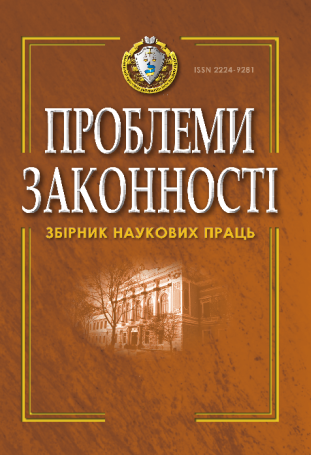Центральна рада і земське самоврядування: березень–жовтень 1917 року
Central Council and zemstvo self-government: March–October 1917
Author(s): Anatolij KozachenkoSubject(s): History of Law
Published by: Національний юридичний університет імені Ярослава Мудрого
Keywords: Central Council; General Secretariat; zemstvo self-government; zemstvo elections; democratic reform; ukrainization;
Summary/Abstract: As a social and political association, the Central Council emerged on March 3, 1917 as a result of the February Revolution in Russia. At that time, under the conditions of the First World War, there was a decline in zemstvo economy, increase in an amount of unpaid zemstvo taxes, decrease in a volume of zemstvo income and concurrently increase in spendings. As a consequence, there was a financial failure of zemstvos. Taking this into consideration, they lost public trust and support. Therefore, one of the most important reforms of the Provisional Government of Russia was to be a reform of zemstvo self-government that received a full support of the Central Council. According to the leaders of the Central Council, the reform would provide ukrainization, democratization and modernization of zemstvos, establishing such local authorities on their basis which the Central Council would rest upon in its regional policy. As a result of the reforms and establishing cooperation between the Central Council and zemstvos, they had to be transformed into genuine local authorities and form the foundation of the Ukrainian statehood. In the spring of 1917, zemstvos expressed their support for the Central Council. They started ukrainization of their own institutions, conducted active social, political and educational activities which were aimed at supporting nation creative activities of the Central Council, spreading the ideas of the Ukrainian statehood and carrying out democratic reforms. Zemstvos promoted in the making of the social and political association «Prosvita» (Enlightenment). However, in July 1917, the Central Council started preparations for introduction of a new system of local self-government. According to legislation of the Provisional Government of Russia, in September 1917, democratic elections for councilors of provincial, county and township zemstvos were held. As a consequence of the elections, the process of democratization and ukrainization of zemstvos took place. Not nobles but peasants constituted more than 60% of zemstvo composition. The newly elected zemstvos fully supported the policy of the Central Council. However, the distancing process between the Central Council and zemstvos continued to develop after the democratic elections to zemstvos. This contradictory attitude of the Central Council to zemstvo self-government was due to two main factors. On the one hand, zemstvos actively supported the national state creative process that prompted the Central Council to cooperate with them. However, during the First World War, there was a decline in zemstvo economy, zemstvos lost public trust and support. So, on the other hand, cooperation with zemstvo self-government discredited the Central Council.
Journal: Проблеми законності
- Issue Year: 2017
- Issue No: 136
- Page Range: 8-14
- Page Count: 7
- Language: Ukrainian

